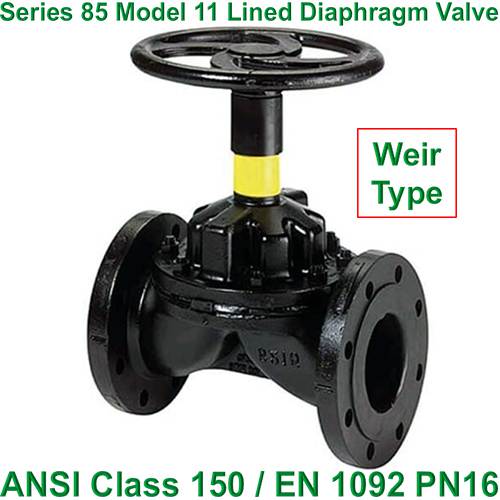What are the advantages of lined diaphragm valve produced by Freeman Valve?
The main benefit of a lined diaphragm valve is the enhanced corrosion resistance due to its protective lining, making it ideal for applications where corrosive chemicals or abrasive liquids are present, particularly in industries such as pharmaceuticals, food processing and chemical manufacturing where purity and resistance to contamination are critical; this lining also provides a smooth, non-stick surface that minimizes the risk of product buildup and facilitates cleaning. Lined Diaphragm valves In abrasive slurry applications, the lining can prevent wear caused by suspended particles. The lined surface of a lined diaphragm valve helps prevent product contamination, which is important in industries that require high purity standards.
What is the temperature range of the lined diaphragm valve produced by Freeman Valve?
Rubber lined diaphragm valve, working temperature -40℃ to 150℃
PTFE lined diaphragm valve, working temperature -20℃ to 180℃
F4 lined diaphragm valve, working temperature -20℃ to 180℃
PFA lined diaphragm valve, working temperature -20℃ to 180℃
FEP lined diaphragm valve, working temperature -85℃ to 150℃
F46 lined diaphragm valve, working temperature -85℃ to 150℃
PCTFE lined diaphragm valve, working temperature -195℃ to 120℃
F3 lined diaphragm valve, working temperature -195℃ to 120℃
PVDF lined diaphragm valve, working temperature -70℃ to 100℃
F2 lined diaphragm valve, working temperature -70℃ to 100℃
PP lined diaphragm valve, working temperature -20℃ to 250℃
F501 lined diaphragm valve, working temperature -20℃ to 250℃
PO lined diaphragm valve, working temperature -58℃ to 80℃
RPP lined diaphragm valve, working temperature -14℃ to 80℃
PVC lined diaphragm valve, working temperature 0℃ to 55℃


